Substance use disorder is a chronic condition that requires lifelong management. If you know someone with addiction, it is important to understand the illness and help your friend. Below we will discuss what substance use disorder is and how best to manage symptoms for those living with it.
Contents
What is Substance Use Disorder?
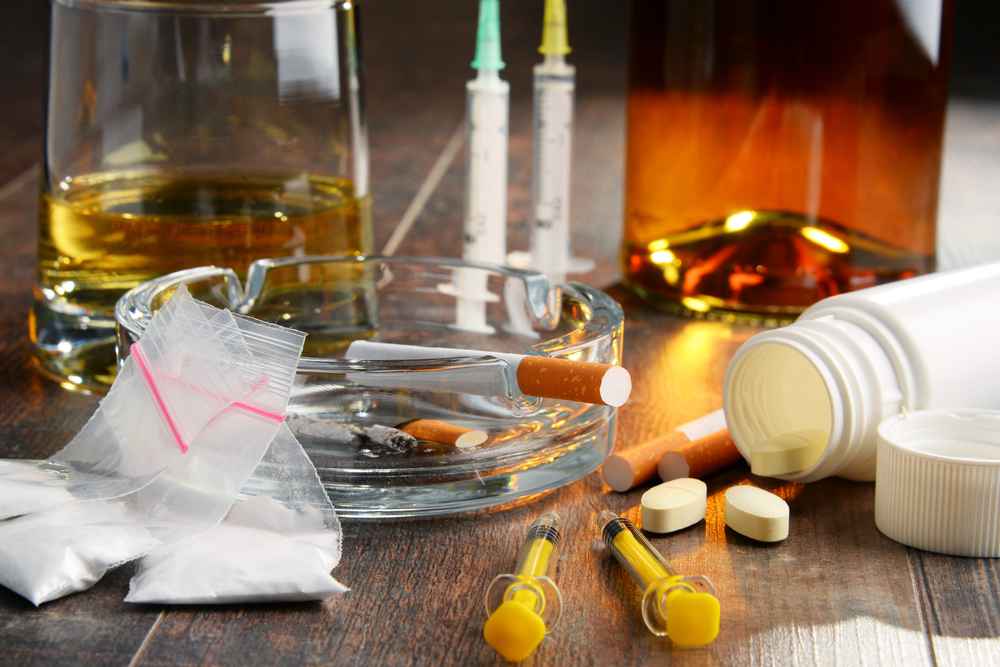
Substance Use Disorder (SUD) is a broad term referring to the abuse of any drug. The most common forms of substance abuse are alcohol, opioids, and cocaine; however, there is no shortage in terms of different types or classes of drugs that one may use. Substance Use Disorder can lead to addiction if you do not treat it properly.
Addiction, or substance use disorder (SUD), is a disease that affects the brain and behavior; however, one can refer it to as chemical dependency. When someone abuses drugs without proper treatment and becomes dependent on them because of this abuse they may end up suffering from addiction. It’s important to understand how these terms relate though in order for anyone who suffers from SUD/addiction to get the help.
Symptoms
Some common symptoms of SUD include:
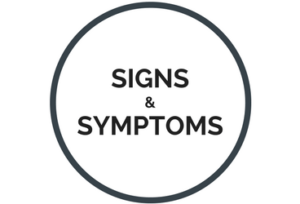
- Feeling that you have to use the drug regularly
- A strong desire or urge to use the drug
- Using more of the drug than you intended
- Spending a lot of time getting, using, or getting over the effects of the drug.
- SUD is often accompanied by other conditions, including mental disorders and medical problems that can affect how well treatment for SUD works. Narrowing down which symptoms are most concerning in any given person will help provide a proper diagnosis. Treatment options available vary depending on both motivation levels as well the severity of addiction/use disorder identified upon assessment. It is important and recovering from its effects
- Craving– A strong need, or urge, to use substances. Cravings are usually triggered by seeing people who drink around you; hearing certain songs; experiencing specific situations (e.g., driving past your old drinking hangouts); thinking about alcohol/drugs; feeling stressed out or anxious; etc.; noticing that it’s early in the day and not having had anything yet.
- Tolerance- A need for increased amounts of drugs over time in order to get high or stave off withdrawal symptoms; this can lead users into a cycle where they take more and more just so that they are able to function normally while still under the influence which is known as “chasing” their initial high. This makes them put themselves at risk because if someone has built up an extremely strong tolerance then it will be near impossible for them not to overdose during this state of taking higher doses than normal since their body will already have adapted itself to processing large amounts without any issues whatsoever.
The list does not end here. To know about the specific symptoms of addiction of each substance, you need to read ahead.
Marijuana, hash, and other cannabis-containing substances
Some people use cannabis by smoking it, eating it, or inhaling a vaporized form. It’s often the first drug that people try.
Signs and symptoms of recent use can include:
- Feeling “high” or experiencing euphoria
- You will be able to see, hear and taste things better.
- When you are stressed, your blood pressure and heart rate increase.
- The eyes become red.
- Dry mouth
- Coordination has decreased.
- Dizziness, nausea, and headaches are common symptoms. Thoughts and behavior can be affected as well.
- Slowed reaction time
- Anxiety or suspicious thinking
- When you smoke or ingest marijuana, your skin might develop a distinct odor and yellow fingertips.
- Sometimes you feel like you want to eat specific foods at certain times. These are called cravings.
Long-term (chronic) use is often associated with:
- Decreased mental sharpness is when you have trouble remembering things. Your mind can’t focus on what it needs to do.
- Poor performance in school or at work is when you do not do well. It can be hard to do well. It is important to try your best.
- Some people have fewer friends and interests.
K2, Spice, and Bath Salts
There are two types of synthetic drugs: synthetic cannabinoids and substituted or synthetic cathinones. These drugs are dangerous, because the ingredients may not be known, and there might not be any quality control.
Signs and symptoms of recent use can include:
- Feeling really happy.
- Elevated moods are good. They make us happy.
- Sometimes, people’s sense of sight, hearing, and taste change.
- When you feel really nervous and scared, it is called extreme anxiety or agitation.
- It can be hard to trust people when you are paranoid. It is scary.
Meth, Cocaine, and other stimulants
Amphetamines, meth (methamphetamine), cocaine, methylphenidate (Ritalin, Concerta, and other brands), and amphetamine-dextroamphetamine are examples of stimulants. They’re frequently abused in search of a “high” or to increase energy, boost performance at work or school, reduce weight or appetite.
Signs and symptoms of recent use can include:
- The feeling of being really happy and feeling good.
- Increased alertness
- Restlessness and an increase in energy
- Behavior changes or aggressiveness
- Dilated eyes
- Confusion, delusions, and hallucinations are all common.
- Irritable, anxious, or paranoid.
- Changes in heart rate, blood pressure, and body temperature can happen.
- Vomiting or nausea following weight loss
- Judgment is compromised.
- You might have a lot of nasal congestion and damage to your nose if you snort drugs. Make sure that you do not do this.
Club drugs
Club drugs are used in clubs, concerts, and parties. I have listed some of them including ecstasy or molly, gamma-hydroxybutyric acid, flunitrazepam, and ketamine. These drugs are not all in the same category but they share some similar effects and dangers.
Drugs like GHB and flunitrazepam can make you sleepy, confused, and without memory. So there is a chance that someone might try to be sexually bad to you after they give these drugs to you.
Signs and symptoms of use of club drugs can include:
- Hallucinations are when you see things that are not there.
- Paranoia is when you think people are trying to hurt you.
- Your eyes are wide open.
- When people are sick, they feel cold and sometimes hot. This might happen with chills or sweating.
- Tremors are shaking. It is involuntary.
- People change their behavior.
- Muscle cramps and teeth clenching happen in people in some situations.
- Poor coordination or musculoskeletal issues are common.
- Your inhibitions have been reduced.
- Sense of sight, sound, and taste have been heightened or altered.
- Unsound judgment
- Memory loss or problems
- You’ll be less conscious.
Hallucinogens
Depending on the type of drug used, hallucinogens may have various symptoms and signals. The most commonly encountered hallucinogens are lysergic acid Diethylamide (LSD) and phencyclidine (PCP).
LSD use may cause:
- Hallucinations are when you see or hear things that don’t exist. It’s like an illusion.
- Reduced sense of reality, for example, interpreting input from one of your senses as another, such as hearing colors
- Impulse control is difficult.
- Extreme mood changes
- Permanent changes in one’s perception of reality
- High blood pressure and a rapid heart rate
- Tremors
- Even years later, flashbacks of the distressing events frequently occur.
PCP use may cause:
- You see things that aren’t there or feel cut off from your body and surroundings.
- Hallucinations are a type of mental illness.
- Coordination and movement difficulties
- Being aggressive, or being violent.
- Eye movements that are not under one’s control
- The sensation of pain is absent
- As well as an increase in blood pressure and heart rate
- A person who has difficulty thinking and remembering is called “dementia.” People with dementia can’t think about things they want to do or remember where they put something. They might not be able to tell the time even though they usually do.
- Difficulties in communicating
- Impaired judgment
- Some people can’t stand loud noise. They get very angry and they could hurt other people.
- Sometimes people have seizures or fall into a coma.
Inhalants
Signs and symptoms of inhalant abuse vary depending on the substance used. Glue, paint thinners, correction fluid, felt tip marker fluid, gasoline, cleaning fluids, and home aerosol products are all examples of commonly inhaled chemicals. Users may succumb to brain damage or death as a result of these chemicals’ hazardous nature.
Signs and symptoms of use can include:
- When you’re using an inhalant substance without a good reason, it’s not only a criminal offense.
- Euphoria or intoxication may be felt for a short time.
- Inhibition has decreased.
- Hostility or combativeness
- Dizziness
- Vomiting or nausea is another common symptom.
- Eye movements that you don’t want to make.
- Slurred speech, sluggish movements, and poor coordination are all signs that a person is intoxicated.
- Irregular heartbeats
- Tremors
- The scent of inhalant substance that lingers
- Around the nose and mouth, there is a purplish tinge.
Opioid painkillers
Opioids are narcotic painkillers produced from opium or synthetically made. This group of medicines includes heroin, morphine, codeine, methadone, and oxycodone. During therapy, some individuals who’ve been taking opioids for a long time may require physician-prescribed temporary or long-term drug replacement due to tolerance.
Signs and symptoms of narcotic use and dependence can include:
- Pain sensation is decreased.
- Sedation, coma, or agitation are possible symptoms.
- Slurred speech
- Attention and memory difficulties
- Pupils are constricted
- Inattentiveness to other people and things
- Problems with coordination
- Existentialism
- Lack of understanding
- constipation
- Runny or dry nose (if snorting narcotics)
- Scratches (if you’re injecting anything)
Causes
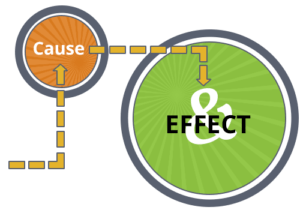
Substance use disorder is a chronic brain disease that affects our behavior, thinking, and emotions. It can impact virtually every aspect of life for the individual struggling with it as well as their loved ones. People simply tell us to “just stop” but this isn’t so easy when you have an illness. This type of addiction doesn’t just go away because someone wants it to or changes their mind about using substances. There are many factors that influence why some people become dependent on drugs while others do not
Genetics
There is increasing evidence that there’s a genetic aspect to addiction. This may be related more to the types of drugs an individual uses rather than whether or not they abuse substances, but genetics can play some role in how easily someone becomes addicted and if so what type of treatment will work best for them.
Environmental
The environment influences our behavior even before we are born. It appears that people who are into exposure while still in-utero or during early childhood had some risk factors for developing substance use disorder later on. These environmental influences include prenatal exposure (which often results from maternal drug use), poverty, trauma (such as physical/sexual/emotional abuse), lack of education & employment opportunities, living environment (such as home/neighborhood), and access to illicit drugs.
Trauma
There is a high rate of co-occurrence between trauma and SUD. This is because the individual self-medicates their negative feelings or it may also be that those who were exposed to trauma are more likely to engage in risky behavior such as using substances; either way, there appears to be an association here that should not go ignored. Those with PTSD (post-traumatic stress disorder) caused by childhood abuse seem particularly vulnerable to developing substance use disorders later on in life.
Diagnosis of Substance Use Disorder
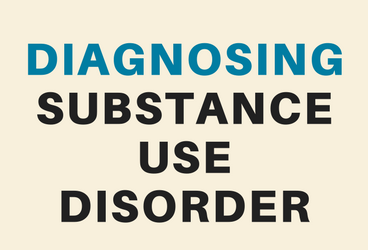
Diagnosis of SUD is based on the presence of at least two specific symptoms from a list of 11.
This is because SUD can be difficult to diagnose and there are many factors. These factors might contribute to its development such as family problems or peer involvement in substance abuse.
Urine Tests
A urine test is considered the most accurate way to detect drug use. It can show recent usage and how much of a certain substance was used, but it cannot determine if someone has SUD itself unless they are looking for very specific drugs such as cocaine or methamphetamine which would be present in greater concentrations than other substances consumed.
Blood Tests
Some people may wonder if there are tests that can diagnose substance use disorder. There is no conclusive evidence found in the scientific literature which suggests a blood test for diagnosing [SUD].
Other Lab Tests
There are not any other lab tests to diagnose substance use disorder. The vest preference is Urine Test if a person wants accurate SUD test reports.
Whom To Reach In Case Of Substance Use Disorder?

If someone you know exhibits any of these signs or symptoms, they should seek help for themselves. People may need help with addiction. If they don’t get help, they can get worse and this can lead to death.
Psychologists
A psychologist is a trained professional who can help you understand substance abuse and provide guidance to lead a healthier life. They will also be able to assist with addiction recovery by providing treatment options that are right for your unique circumstances.
Medical Doctors
If someone has a SUD, they should speak with their doctor. The doctor can help them get the right medicine or other medicine-assisted therapy. MAT helps people get better from drug addiction. It reduces the cravings while they are detoxing so that when treatment is over, they have more support in staying sober. In this type of therapy, people can get better without trying hard. It helps them recover from addiction.
Counselors/Therapists
A therapist or counselor can help you learn more about your condition and start on the road to recovery. They are not doctors, so they cannot give people medicine for SUD. They can guide people through therapy to help with addiction problems. Counselors may also be able to recommend a psychologist who specializes in drug rehabilitation if it is required during their own practice as well.
Treatment
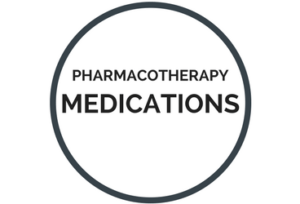
Treatment of SUD varies depending on the severity of the disorder. This can be done by using medications, therapy, or a combination of both. Both are effective in controlling cravings for drugs and alcohol while boosting moods to avoid relapse.
Detoxification
The first step is detoxification which removes toxins from the body that have accumulated due to substance abuse. People who are quitting smoking should not try to quit without help. This is because it might make them feel bad. They might go back to smoking even if they stop now. Some people in rehab programs can get medical help. Some people need medicine for a long time after they finish the program.
Medications
This is a process in which individuals addicted to drugs and alcohol receive medications such as anti-craving ones like naltrexone, acamprosate, or disulfiram; opioid replacement therapies (ORTs) such as methadone and Suboxone; partial agonists at the GABA receptor site of opiate receptors like butorphanol who can be prescribed instead of full agonists that are opioids themselves and carry more risk than benefits when used long term. Some doctors may give you medicine that will help with depression after you stop using drugs. This can happen if someone has been taking these legal substances for a long time or self-medicating.
Therapy
Cognitive-behavioral therapy is a common type of therapy. It focuses on the connection between your thoughts, feelings, and behaviors. This therapy teaches people how to think better. They learn to not use drugs when they are sad or stressed.
Combined Tests
Using a combination of both medications and therapy is the most common treatment for SUD cases. However, if you cannot afford the expensive route, then it is best to do one or the other. There is a risk when you do this though. After detoxification, individuals will need support from their therapists, but they won’t get this support unless they stay on medication.
No Opioid Overdose
Opioid addiction can lead to overdose which is when an individual takes more than the prescribed amount for their own use in order to get high. This is a dangerous thing to do. It might make you stop breathing and not be able to get up again. You will probably need medicine or medical treatment if you do this and don’t tell someone. Individuals who want to recover from Substance Use Disorder must avoid opioid overdose. This will speed up the recovery and thus, let you stay in control.
Behaviour Therapy
Behavior therapy is another form of addiction treatment that mainly focuses on the behavior part. This type of therapy helps people to identify what triggers them to take drugs or drink alcohol. It also teaches different ways of coping with the desire for drugs or alcohol, like meditation or relaxation techniques.
Counseling
This kind of counseling can help people with substance use disorders. It helps them talk and think and not want to use drugs. They also work on finding other ways to feel normal without using drugs. The therapist would listen without judgment until the individual feels comfortable enough to open up about their problems and issues.
Cognitive Therapy
Talking to someone about substance use can help them not need it. It is like talk therapy and makes them think differently. They might stop self-medicating even though they know that it’s bad for their health. Cognitive therapy will also identify behaviors, thoughts, and feelings associated with addiction. It will teach you how to deal with these feelings before you resort back to using drugs again just to be able to feel better.
Self Help Groups
After people get sober, they can go to meetings where they talk with other people who also had problems with drugs or alcohol. That is a good way for them to share their feelings that might be bad. Why don’t you try it? You will have friends there for moral support. And if you do drugs again, it is more dangerous. You should see a doctor after doing drugs again.
Social Support
It is important to have strong social ties with friends and family members. These people will know how hard it is to recover from addiction because they might have suffered from addiction themselves. They will be there for you when you need moral support because they know what it’s like.
Risk Factors
There are several factors that can influence the development of a substance use disorder. These include age, genetics, mental illness, environment, and work-life stability. Each one has its own unique impact on addiction pathogenesis. It is important to know about each risk factor for substance abuse. But it is also important to notice when someone might have a problem with substances before it becomes too serious and they need medical treatment. If you know about the signs that something is wrong with drugs and alcohol, then you will not feel powerless.
Family history of addiction
Family history of addiction can also contribute greatly towards the likelihood that a person develops a substance use disorder later on in life as well as how severe their symptoms are if they do develop such an issue. For instance, if a person’s parent or sibling has struggled with addiction then they may be more likely to develop the same disorder themselves and their course of illness will also tend to be worse than someone who did not have such predisposition towards SUD in their family history.
Mental health disorder
Many people who develop an addiction problem will also have a history of mental health disorders. This is not necessarily true in all cases, however, there are certain conditions that increase the risk of SUD development such as major depressive disorder or bipolar disorder. Additionally, personality disorders can heighten one’s likelihood of developing substance use problems and these include borderline personality disorder (BPD)
Peer pressure
Another factor that can increase one’s risk of SUD is the social environment. For instance, if you have friends who regularly drink or do drugs this could influence your own substance use habits and make it more likely for these behaviors to occur within a similar context later on.
Work-life stability
Work-life balance is another significant contributor towards addiction pathology because when individuals lose their job or find themselves unable to pay bills due to reduced income from not working then some may turn to illicit substances. This way by using alcohol or other drugs people feel better about what they currently lack in their lives and while there isn’t necessarily anything wrong with taking a break every once in a while, maintaining such an approach for extended periods of time is where substance use becomes problematic.
Lack of family involvement
While it is normal for people to want some alone time when individuals withdraw themselves from their family and friends this becomes a significant sign that something may be wrong. This can include not wanting to socialize or go out anymore because the person prefers spending their free time using alcohol or other drugs. Other signs of SUD development in an individual who does not have much support from loved ones include:
- Not going out with others as frequently
- Skipping important events such as birthdays and holidays where drinking and drug use
An early use
One of the first signs that someone may be struggling with a substance use disorder is if they begin using alcohol or other drugs early on in life. This can include as young as high school, college, and even younger depending upon how easy it was for them to get their hands on these substances during those developmental years when peer pressure tends to run rampant among adolescents who are still trying to figure out what type of person they want to become.
Behaviors associated with intoxication
While some people drink or do drugs just because it makes them feel good from time to time without there being any issue whatsoever, others will constantly engage in such behaviors throughout their daily lives despite negative consequences occurring, as a result, more often than not.
- Frequently drinking or using drugs whenever they can
- Having an inability to stop once they start engaging in substance use (compulsion)
- Regularly consuming larger amounts of alcohol than intended, having blackouts and memory loss as well as the potential for overdose if one drinks too much overtime
- Using illicit drugs even though it causes problems in their daily life such as missing work and avoiding family members and friends due to intoxication. This way individuals may keep abusing substances despite negative consequences because addiction is like any other chronic illness; meaning the more you do something the harder it becomes to quit no matter how bad things get eventually down the line. Therefore, being able to have a good grasp of the signs and symptoms of SUD is important.
Conclusion
If you or someone you know has a substance use disorder, it’s important to find help. We can help you find the right treatment for your needs and provide guidance on how to live with addiction successfully in sobriety. Substance abuse is not something that goes away overnight; however, if treated by professionals now it may be easier later down the road. Let us show you what options are available so that we all have better lives together!
For more information, please contact MantraCare. Addiction is a chronic and often relapsing disorder characterized by compulsive drug-seeking and use despite harmful consequences. If you have any queries regarding Online Addiction Counseling experienced therapists at MantraCare can help: Book a trial Online therapy session
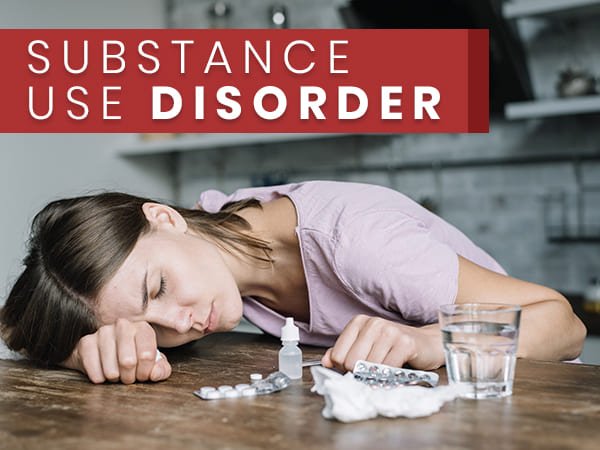


Comments are closed.